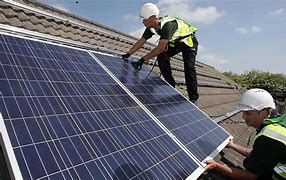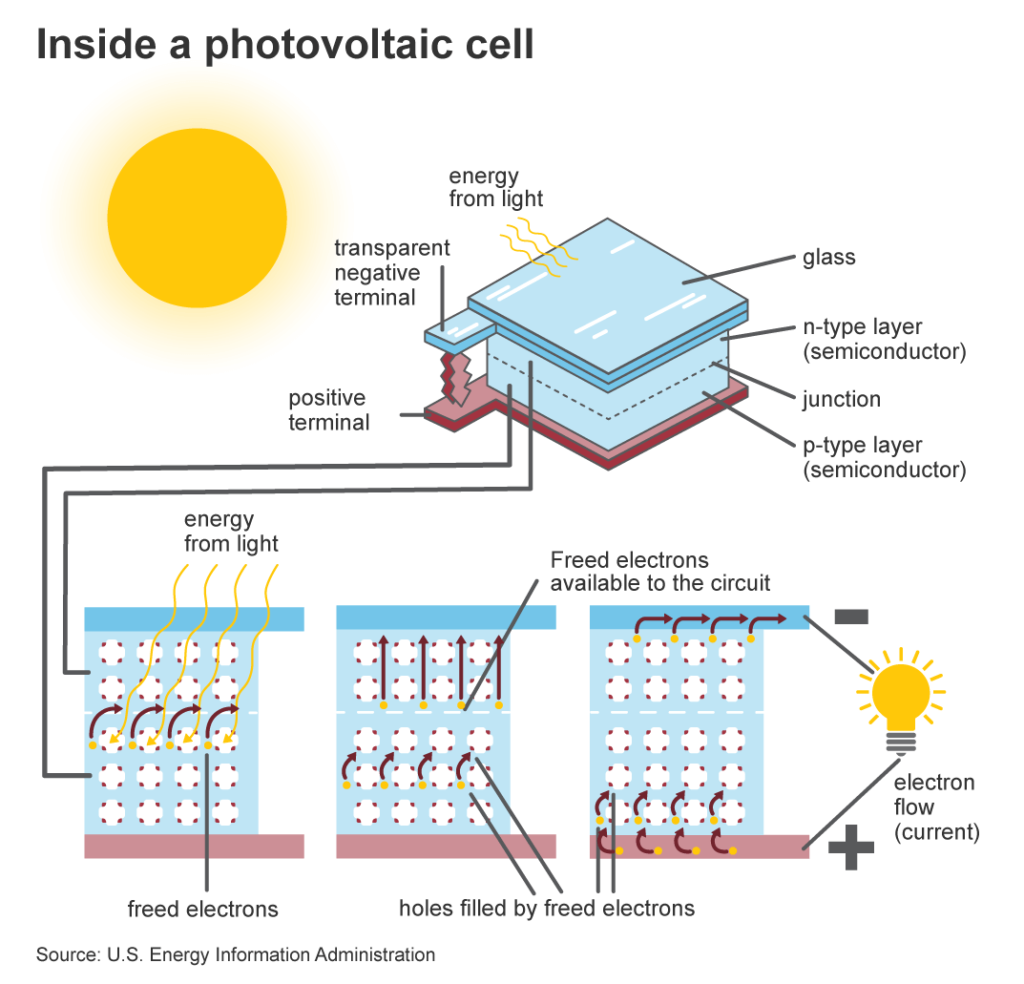Introduction to Solar Energy and its Benefits
Get your free in-house solar quote.
Call or Text Bill at (225) 413-8928

Welcome to the Lone Star State, where big things are happening in sustainable energy! With its vast open spaces and abundant sunshine, Texas is quickly becoming a hub for solar power. In this blog post, we will explore how Texas solar panels are revolutionizing how we generate electricity and saving homeowners and businesses significant amounts of money in the process.
Imagine harnessing the sun’s power to fuel your home or business – it’s like having your source of clean and renewable energy right at your fingertips. Solar energy offers numerous benefits, from reducing carbon emissions and promoting environmental sustainability to providing long-term cost savings. So, let’s dive into the world of Texas Solar Panels and discover why they’re essential to building a brighter future for our state – both economically and environmentally.
The Growing Popularity of Solar Panels in Texas
The Lone Star State, known for its vast open spaces and abundant sunshine, is experiencing a surge in the popularity of solar panels. Texans recognize the numerous benefits of harnessing the sun’s power to generate clean and sustainable energy.
One reason for this growing trend is the increasing affordability of solar panel installations. Technological advancements have made solar panels more efficient and cost-effective than ever before. As a result, homeowners and businesses in Texas realize that investing in solar energy can lead to significant long-term savings on their electricity bills.
Moreover, concerns about environmental sustainability are driving many Texans to embrace solar power to reduce their carbon footprint. Solar panels produce no greenhouse gas emissions during operation, helping combat climate change and preserve our natural resources.
Another factor contributing to the rise of solar panels in Texas is the availability of financial incentives. The state offers programs such as tax credits, rebates, and net metering policies that make going solar even more affordable. These incentives encourage individuals and businesses alike to switch to renewable energy sources.
Additionally, increased public awareness about renewable energy’s potential has led to a shift towards embracing clean sources like solar power. More people are realizing that by installing solar panels on their roofs or properties, they not only save money but also contribute positively towards building a sustainable future for Texas.
It’s clear why solar panels are growing in popularity in Texas – from cost-effectiveness to environmental consciousness – there are numerous reasons why more Texans choose this sustainable option for generating electricity. With ongoing technological advancements and supportive government policies, we can expect this trend to continue as more residents tap into the abundant sunshine available throughout the state!
How Do Solar Panels Work?
Solar panels are at the forefront of sustainable energy technology, harnessing the sun’s power to generate electricity. But how exactly do they work? Let’s dive into the fascinating world of solar panel technology.
At their core, solar panels comprise photovoltaic (PV) cells that convert sunlight into direct current (DC) electricity. These cells consist of layers of semiconducting materials, typically silicon, which absorb photons from sunlight.
When sunlight hits these PV cells, it excites electrons in the material and creates an electric current. Using an inverter, this DC electricity is then converted into alternating current (AC), suitable for powering homes and businesses.
To maximize efficiency, solar panels are often mounted on rooftops or other areas with optimal sun exposure. The angle and orientation can be adjusted to capture as much sunlight as possible throughout the day.
The generated electricity can be used immediately or stored in batteries for later use. In cases where excess energy is produced, it can even be fed back into the grid through net metering.
By utilizing this clean and renewable source of energy, solar panels not only reduce dependence on fossil fuels but contribute to a greener future. With advancements in technology and decreasing costs, more people are now embracing solar power as a viable solution for meeting their energy needs while minimizing their carbon footprint.
So next time you see those sleek black panels adorning rooftops across Texas, remember they’re silently working hard to harness sunshine and provide sustainable energy for our homes and businesses!
Financial Incentives for Installing Solar Panels in Texas
Installing solar panels in your home or business helps the environment and offers several financial incentives in Texas. These incentives make solar energy more accessible and affordable for residents and businesses.
One of the most appealing financial incentives is the Federal Investment Tax Credit (ITC), which allows you to deduct a percentage of your solar panel installation cost from your federal taxes. The ITC currently provides a 30% tax credit for residential and commercial installations.
In addition to federal incentives, Texas also offers its incentive programs. The state’s Property Tax Exemption allows homeowners who install solar panels to exempt their system’s value from property taxes, saving them money each year. Furthermore, many utility companies offer net metering programs that allow you to sell back excess electricity generated by your solar panels to offset your energy bills.
To take advantage of these financial incentives, you must work with certified solar installers who can guide you through the application process and ensure you meet all eligibility requirements.
By installing solar panels in Texas, you can reduce your carbon footprint, contribute to a more sustainable future, and enjoy significant long-term savings on your energy bills while taking advantage of various financial incentives available at both federal and state levels. So why wait? Start harnessing the power of the sun today!
Steps to Install Solar in Your Home or Business

Installing solar panels in your home or business is a great way to harness the sun’s power and reduce your reliance on traditional energy sources. Installing solar panels at your Texas home or business is a substantial project that involves several steps.
While the exact process can vary from one install to another based on local regulations, the structure of the building, and the type of solar panel system chosen. Are you getting a solar panel system with battery backup or not. Are you planning to participate in net metering and sell some of your generated electricity back to the energycompanies? These are just a couple of factors that can effect the install process.
The general steps to install your Texas Solar Panels are as follows:
- Research and Education: Before anything, educate yourself about solar power and its benefits. Understand the different types of solar systems, components involved, and financial incentives available in your area.
- Determine Suitability: Check if your location receives enough sunlight for solar power. You can use tools like Google’s Project Sunroof for this.
- Consultation: Have a solar provider assess your property to determine system size, expected energy production, potential cost savings, and installation costs.
- Financial Evaluation: Review the cost of the system, available incentives, tax credits, grants, and financing options. Depending on where you live, you may qualify for federal, state, or local incentives.
- Choose a Contractor: Work with a reputable solar installer. Check their credentials, reviews, and ask for references.
- Site Assessment: The installer will evaluate your property’s electrical system, roof condition, and structural elements. They’ll also identify the best placement for the panels.
- System Design: Based on the site assessment, the contractor will design a solar system tailored to your property’s specifics.
- Permits and Documentation: The installer typically handles the necessary permits. This may include building, electrical, and zoning permits.
- Purchase Equipment: Order the solar panels, inverters, mounting systems, and any other necessary equipment.
- Installation:
- Set up a mounting or racking system on the roof or ground.
- Install the solar panels on the mounting system.
- Install the inverter(s). This could be a central inverter or microinverters attached to each panel.
- Connect the solar panel system to your electrical panel.
- Implement a monitoring system to track energy production.
- Inspection: After installation, local authorities usually require an inspection to ensure everything meets code requirements.
- Utility Connection: Once approved, you can connect your system to the grid. Your utility company will provide a new meter that can track the energy your system feeds back into the grid.
- Turn On the System: After everything is in place and tested, you can start generating your own solar power!
- Monitoring and Maintenance: Regularly check the system’s production to ensure it’s operating correctly. While solar systems require minimal maintenance, it’s a good practice to have periodic checks to ensure optimal performance.
- Enjoy the Benefits: You’ll start to see savings on your electricity bill, and you’ll also be reducing your carbon footprint.
Throughout this process, communication with your chosen contractor or installer is vital. They can help guide you through each step and make the transition to solar energy in Texas as smooth as possible.
After everything is properly installed, it’s essential to have a professional technician inspect and test the system for safety compliance. They will also assist you in setting up monitoring systems so you can track your energy production.
Remember that maintenance plays an important role in ensuring the optimal solar panel system performance. Regular dust or debris accumulation cleaning is recommended, along with periodic inspections by professionals.
By diligently following these steps, you can enjoy clean, renewable energy from your Texas solar panels while reducing carbon emissions and utility costs!
The Long-Term Savings of Solar Energy in Texas
With the rising cost of traditional energy sources, many Texans are turning to solar panels to reduce their carbon footprint and save money in the long run. By harnessing the sun’s power, solar panels provide a sustainable and renewable energy source that can significantly lower monthly utility bills.
One of the main advantages of using solar energy is the potential for substantial savings over time. While an initial investment is required for purchasing and installing solar panels, these costs can be recouped through reduced or even eliminated electricity bills. Studies have shown that homeowners with solar panels can save thousands of dollars on energy expenses over 20 years or more.
Furthermore, Texas offers various financial incentives that make going solar even more appealing. The state provides property tax exemptions for residential and commercial properties with installed solar systems. Additionally, there are federal tax credits available that can cover up to 26% of installation costs.
Another factor contributing to long-term savings is the durability and longevity of solar panel systems. Most reputable manufacturers offer warranties ranging from 20 to 25 years, ensuring that your investment will last well into the future without significant maintenance expenses.
Moreover, as technology advances rapidly in this field, we will likely see improvements in both efficiency and affordability in the coming years. Investing in solar now could lead to even greater savings as newer and more efficient models become available.
In addition to financial benefits, using solar energy also has environmental advantages by reducing reliance on fossil fuels and decreasing greenhouse gas emissions. By switching to clean energy sources like sunlight, individuals contribute towards building a greener future for Texas while enjoying long-term economic benefits.
In conclusion, embracing Texas Solar Panels not only presents an opportunity for significant long-term savings but also allows residents to actively participate in creating a sustainable future powered by clean and renewable energy sources.
Conclusion: Embracing a Brighter Future with Texas Solar Panels
As the demand for clean and sustainable energy continues to rise, solar panels have emerged as a key solution in meeting our energy needs while reducing our carbon footprint. With its abundant sunshine and vast open spaces, Texas is an ideal location for harnessing the sun’s power through solar panel installations.
By investing in Texas solar panels, residents and businesses cannot only reduce their reliance on fossil fuels but also enjoy numerous financial incentives that make this renewable energy source even more appealing. The state’s commitment to supporting solar adoption has led to various programs that provide rebates, tax credits, and net metering opportunities.
Understanding how solar panels work is essential in realizing their potential benefits. By converting sunlight into electricity through photovoltaic cells made of semiconductor materials like silicon, these panels generate clean energy without producing harmful emissions or noise pollution. This means you can power your home or business while minimizing environmental impact.
Installing solar panels may seem daunting at first glance, but rest assured, it is simpler than you might think. By following a few straightforward steps, such as assessing your site’s suitability for installation, choosing the right system size and components, obtaining necessary permits, and finding reputable installers or doing it yourself, you can confidently embark on your journey towards sustainable energy savings.
One of the most significant advantages of using solar energy in Texas lies in its long-term savings. With rising utility costs year after year, switching to solar power provides substantial relief by offsetting or even eliminating electricity bills. Additionally, any excess electricity your system generates can be sold back to the grid through net metering arrangements, further enhancing cost savings.
Embracing a brighter future with Texas Solar Panels benefits individual homeowners and businesses and contributes significantly towards achieving statewide sustainability goals. By reducing greenhouse gas emissions associated with traditional forms of electricity generation, such as coal-fired power plants, Texas can move closer to a cleaner and healthier environment for future generations.
So, whether you are a homeowner looking to reduce your carbon footprint and energy bills or a business owner seeking to invest in renewable energy consider Texas Solar Panels many advantages. By harnessing the sun’s power, you can help create a greener, more sustainable future for all.

